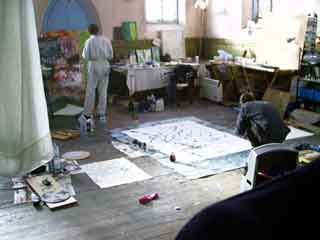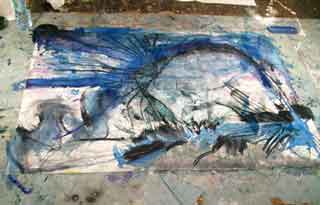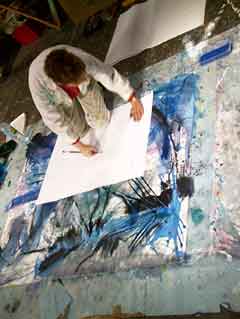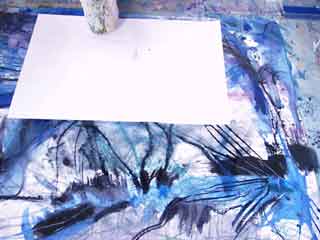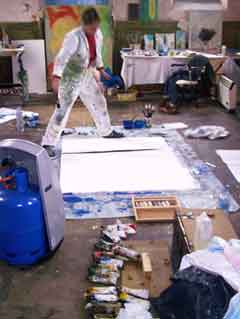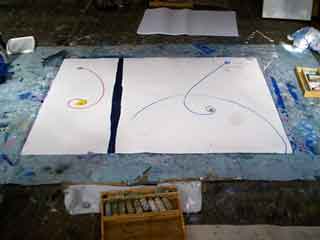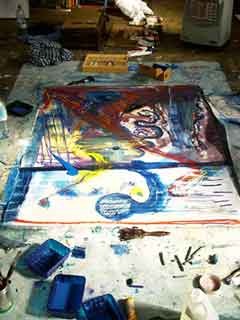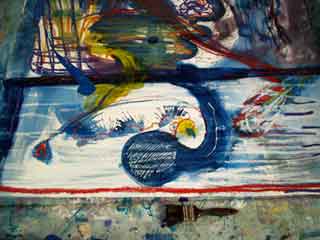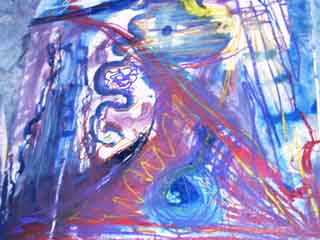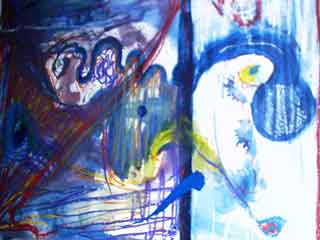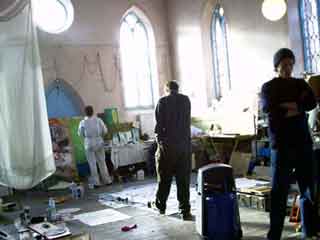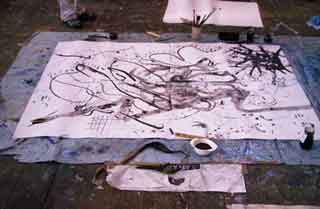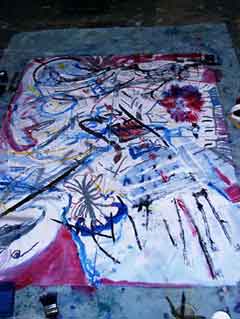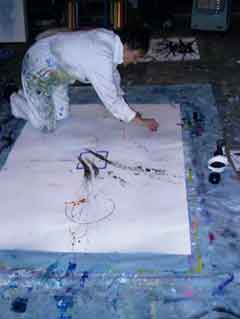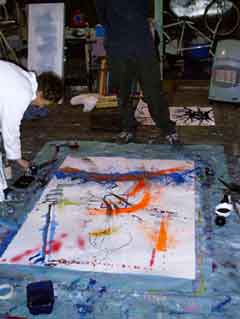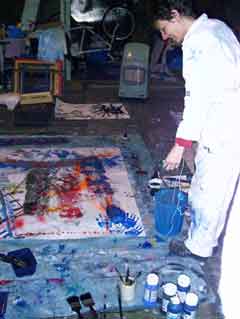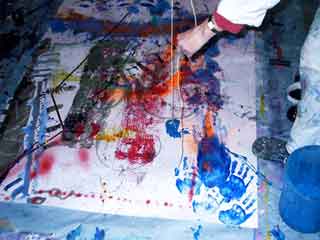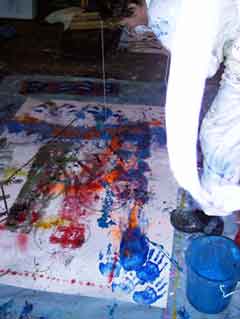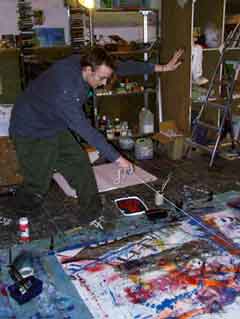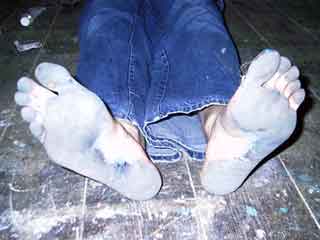| piece
#3 blind collaboration |
piece #3
after lunch.
joined by dave.
did the act of seeing someone make
marks influence the way you made your mark?
same rules applied as above (no boundary
this time though)
but this time you could not watch the
process.
we kept our backs turned until it was
the next persons turn.
black ink only.
this for me didn't work as well as previous
pieces.
part of the process seems to be centered
around watching and responding to the mark being made.
it was particularly difficult due to
the choice in medium, as working in black and white made the
marks difficult to distinguish.
it might be worth trying it with colour?
another factor was the time.
for two thirds of the time we were staring
at the wall, it made it the amount of time you spent at the
paper 'pressurised', i didn't feel involved as i did previously.
however this exercise could be repeated
more easily between two artists and perhaps rather than create
one piece the artists could swap over and create two works,
so there is no gap between the work.
exercises like this help define what
collaboration is and isn't about.
|
